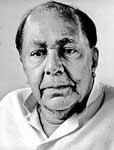
Kala Korner
There is at least one journalist amongst us who is deeply concerned about the rapid deterioration in the usage of the Sinhala language. Veteran journalist D.F. Kariyakarawana ('Kari' to his friends who have worked with him decades ago) laments on the plight of the language and puts the entire blame on the media. "It's true Sinhala is a language with a proud heritage. Yet, according to experts it will soon vanish. Judging from what's happening in the written and electronic media today, there is some truth in what they say. The language is ruined by the newspapers today. It's far worse in the electronic media. Some have gone to the dogs. If they can understand even the dogs will stop eating," he mourns. In a new book he has just released titled 'Aruth Niruth' discussing the meaning and etymology of Sinhala words, he hits hard at the way some channels use the language. "They prefer to put in three or four English words in between a sentence. Even when beautiful Sinhala words can be used, still they like to use English words. The disease has spread to epidemic proportions today. Some are breathing their last. Others are in a critical condition." In a desperate bid to arrest the situation he has taken the initiative in gathering a group of people who are concerned about the future and who are keen on saving the language for posterity. After his retirement having served as editor of several newspapers, Kari has, through regular columns in Sinhala weeklies, pinpointed the trend where the language was not being used properly. In fact, these columns were valuable lessons to journalists. A handy guide The book 'Aruth Niruth' is yet another effort by Kari to focus attention on the correct use of Sinhala. He introduces it as a guide to media personnel - both working journalists and students. It's a handy guide where the reader can not only gather the meaning of the word but also understand its evolution. What's unique is that he has picked up words which are commonly used and tries to locate their origin and how they came to be used. Let's take a few words in the book. 'Thuppahi’ once used to mean 'translator', according to Kari,is a Portuguese word. Today the word is used to identify persons of Portuguese-Dutch origin of a lower class. 'Tuttuva' originally meant one and a half cents which, at that time, was a fairly sizeable amount. Kari remembers buying two hoppers for a 'tuttuva'. For two 'tuttu', one could buy an egg hopper mixed with treacle.
Several Sinhala words were being used for 'You' in English. That was until Munidasa Cumaratunga picked 'Oba'. The whole country accepted it. It's commonly used today. But, as Kari points out, not everyone knows that 'oba' can be used both as a singular and plural. There is no need to say 'obalaa' in the plural. 'Oralosuwa' came to us from the Dutch word 'Orlozi'. 'Paraala' came from the Portuguese 'Parallelo'. Hardly anyone may remember that 'Ikshupaaka' was the brand name for 'gal arakku' - a cheap arrack manufactured in the Gal Oya valley. 'Ikshu' means cane. 'Paaka' means 'festering'. Kari feels the term 'gal arakku' was derived from 'arrack manufactured in Gal Oya'. 'Aruth Niruth' is a unique publication and is much more than a dictionary. Kari has taken great pains in making it a most readable and interesting book. The total collection of words is 1550. At the end of the book, Kari explains how the one time big media houses were identified by the public. There was 'Beira gedara' for Lake House, which the editor of 'Sinhala Balya', Hemapala Munidasa coined in the 1940s. It meant 'the house by the lake'. In later years the leftists used to talk about 'beira gedera pacha pattara'. Munidasa identified Times of Ceylon as 'Samayang gedara' possibly because the word 'samaya' meant 'times'. ('Lanka Samaya' was a newspaper published by novelist W. A. Silva.). To Hemapala Munidasa, 'Dawasa/Sun Group' was 'Magul gedara'. 'Sawasa' was an evening daily the Group published. It was popular among the young. My association with Kari goes back to the days he was the chief sub-editor on the 'Dinamina' having moved over from the 'Lankadeepa'. He never failed to point out when we reporters made mistakes in our copy. That was way back in the late fifties. He still continues his mission. May he gain more strength to carry on with the good work. |
|| Front
Page | News | Editorial | Columns | Sports | Plus | Financial
Times | International | Mirror | TV
Times | Funday
Times || |
| |
Reproduction of articles permitted when used without any alterations to contents and the source. |
© Copyright
2007 Wijeya
Newspapers Ltd.Colombo. Sri Lanka. All Rights Reserved. |

